Ditapis dengan
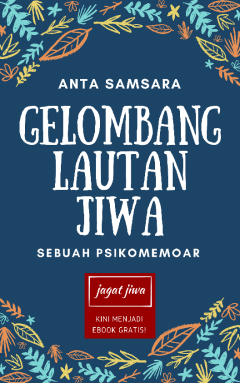
Gelombang Lautan Jiwa
- Edisi
- -
- ISBN/ISSN
- 978-602-02-0220-4
- Deskripsi Fisik
- 213 Halaman
- Judul Seri
- -
- No. Panggil
- 616.890 ANT g
- Edisi
- -
- ISBN/ISSN
- 978-602-02-0220-4
- Deskripsi Fisik
- 213 Halaman
- Judul Seri
- -
- No. Panggil
- 616.890 ANT g

Akuntansi Keuangan: Intermediate Accounting (Edisi 16 Buku 2)
- Edisi
- Edisi 16 Buku 2
- ISBN/ISSN
- 9789812546784
- Deskripsi Fisik
- 2 jil., 924 hlm., 19 x 26 cm.
- Judul Seri
- -
- No. Panggil
- 657.48 JAM a
- Edisi
- Edisi 16 Buku 2
- ISBN/ISSN
- 9789812546784
- Deskripsi Fisik
- 2 jil., 924 hlm., 19 x 26 cm.
- Judul Seri
- -
- No. Panggil
- 657.48 JAM a

Akuntansi Keuangan (Edisi 16 Buku 1)
- Edisi
- Edisi 16 Buku 1
- ISBN/ISSN
- 9789812546777
- Deskripsi Fisik
- 2 jil., 970 hlm.; 19 x 26 cm.
- Judul Seri
- -
- No. Panggil
- 657.48 JAM a
- Edisi
- Edisi 16 Buku 1
- ISBN/ISSN
- 9789812546777
- Deskripsi Fisik
- 2 jil., 970 hlm.; 19 x 26 cm.
- Judul Seri
- -
- No. Panggil
- 657.48 JAM a

Pengantar Akuntansi
- Edisi
- -
- ISBN/ISSN
- 9796913402
- Deskripsi Fisik
- 2 jil., 21 x 26 cm, 656 hlm.
- Judul Seri
- -
- No. Panggil
- 657 WAR p
- Edisi
- -
- ISBN/ISSN
- 9796913402
- Deskripsi Fisik
- 2 jil., 21 x 26 cm, 656 hlm.
- Judul Seri
- -
- No. Panggil
- 657 WAR p

Strategic Management Concepts dan Cases
- Edisi
- ke - 13
- ISBN/ISSN
- 9780136120988
- Deskripsi Fisik
- 686 Halaman
- Judul Seri
- -
- No. Panggil
- 658.4 FRE s
- Edisi
- ke - 13
- ISBN/ISSN
- 9780136120988
- Deskripsi Fisik
- 686 Halaman
- Judul Seri
- -
- No. Panggil
- 658.4 FRE s

Dasar-Dasar Manajemen Produksi dan Operasi (Edisi I)
- Edisi
- 1
- ISBN/ISSN
- 9795032860
- Deskripsi Fisik
- -
- Judul Seri
- -
- No. Panggil
- 658.5 HAN d
- Edisi
- 1
- ISBN/ISSN
- 9795032860
- Deskripsi Fisik
- -
- Judul Seri
- -
- No. Panggil
- 658.5 HAN d

Simulasi komputer sistem diskrit
Buku ini dirancang sebagai uku pegangan mata kuliah simulasi pada program studi Teknik Industri dan pada beberapa program studi lain yang berhubungan dengan persoalan optimasi. Buku ini lahir sebagai bentuk akumulasi dari rangkuman berbagai buku teks wajib maupun pendukung mata kuliah Simulasi Sistem Industri sehingga akan dijumpai banyak keistimewaan di dalamnya. Sebagai buku pegangan mata kul…
- Edisi
- -
- ISBN/ISSN
- 9797638235
- Deskripsi Fisik
- xvi, 256 hlm.; 16 x 23 cm
- Judul Seri
- -
- No. Panggil
- 670 ASM s

Utilitas bangunan: buku pintar untuk mahasiswa arsitektur-sipil
- Edisi
- Cet. 7
- ISBN/ISSN
- 9789794285893
- Deskripsi Fisik
- viii, 169 hlm.: ill.; 23 cm
- Judul Seri
- -
- No. Panggil
- 691.1 HAR u
- Edisi
- Cet. 7
- ISBN/ISSN
- 9789794285893
- Deskripsi Fisik
- viii, 169 hlm.: ill.; 23 cm
- Judul Seri
- -
- No. Panggil
- 691.1 HAR u

Pengantar Bisnis
- Edisi
- -
- ISBN/ISSN
- 9798433009
- Deskripsi Fisik
- 296 hlm.; 15 x 23 cm.
- Judul Seri
- -
- No. Panggil
- 650 BUC p
- Edisi
- -
- ISBN/ISSN
- 9798433009
- Deskripsi Fisik
- 296 hlm.; 15 x 23 cm.
- Judul Seri
- -
- No. Panggil
- 650 BUC p

Budidaya Ikan Patin: Biologi, Pembenihan dan Pembesaran
- Edisi
- -
- ISBN/ISSN
- 9797192679
- Deskripsi Fisik
- 170 hlm.; 14 x 21 cm.
- Judul Seri
- -
- No. Panggil
- 639.977 GHU b
- Edisi
- -
- ISBN/ISSN
- 9797192679
- Deskripsi Fisik
- 170 hlm.; 14 x 21 cm.
- Judul Seri
- -
- No. Panggil
- 639.977 GHU b

Buku pintar pergudangan
Pergudangan telah berubah menjadi salah satu competitive advantage bagi sebuah perusahaan dan bukan hanya menjadi cost semata.
- Edisi
- Cetakan I
- ISBN/ISSN
- 9786026469960
- Deskripsi Fisik
- vi, 106 hlm
- Judul Seri
- -
- No. Panggil
- 658.7 WYN b

Implementasi manajemen stratejik: kebijaka dan proses
- Edisi
- Cet. 5
- ISBN/ISSN
- 9799688531
- Deskripsi Fisik
- -
- Judul Seri
- -
- No. Panggil
- 658.4102 USM i
- Edisi
- Cet. 5
- ISBN/ISSN
- 9799688531
- Deskripsi Fisik
- -
- Judul Seri
- -
- No. Panggil
- 658.4102 USM i

Management accounting - akuntansi manajemen (Edisi 7 Buku 2)
- Edisi
- E.7
- ISBN/ISSN
- 978979691199X
- Deskripsi Fisik
- 2 jil., 564 hlm., 21 x26 cm
- Judul Seri
- -
- No. Panggil
- 658.1511 DON m
- Edisi
- E.7
- ISBN/ISSN
- 978979691199X
- Deskripsi Fisik
- 2 jil., 564 hlm., 21 x26 cm
- Judul Seri
- -
- No. Panggil
- 658.1511 DON m
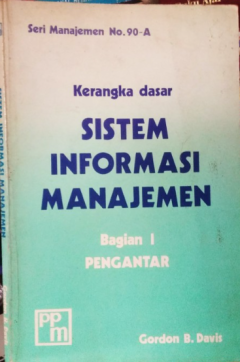
Kerangka dasar sistem informasi manajemen : bagian I pengantar
- Edisi
- Cet.12
- ISBN/ISSN
- -
- Deskripsi Fisik
- -
- Judul Seri
- -
- No. Panggil
- 658.4 DAV k
- Edisi
- Cet.12
- ISBN/ISSN
- -
- Deskripsi Fisik
- -
- Judul Seri
- -
- No. Panggil
- 658.4 DAV k

Mengenal & Mengendalikan Predator Benih Ikan
- Edisi
- -
- ISBN/ISSN
- 9789792236507
- Deskripsi Fisik
- ix, 95 cm.; 17.5 x 23 cm.
- Judul Seri
- -
- No. Panggil
- 631.52 KHA m
- Edisi
- -
- ISBN/ISSN
- 9789792236507
- Deskripsi Fisik
- ix, 95 cm.; 17.5 x 23 cm.
- Judul Seri
- -
- No. Panggil
- 631.52 KHA m

Membuat & Memanfaatkan Pestisida Ramah Lingkungan
- Edisi
- -
- ISBN/ISSN
- 9793084669
- Deskripsi Fisik
- vi, 94 hlm.; 23,5 cm
- Judul Seri
- -
- No. Panggil
- 632.95 NOV m
- Edisi
- -
- ISBN/ISSN
- 9793084669
- Deskripsi Fisik
- vi, 94 hlm.; 23,5 cm
- Judul Seri
- -
- No. Panggil
- 632.95 NOV m

Kiat Agribisnis Lele: Panduan Teknis dan Non-Teknis Pembenihan dan Pembesaran
- Edisi
- -
- ISBN/ISSN
- 9790080619
- Deskripsi Fisik
- iv, 68 hlm.; ilus.; 23 cm.
- Judul Seri
- -
- No. Panggil
- 631 EST k
- Edisi
- -
- ISBN/ISSN
- 9790080619
- Deskripsi Fisik
- iv, 68 hlm.; ilus.; 23 cm.
- Judul Seri
- -
- No. Panggil
- 631 EST k

Kewirausahaan: Manajemen Usaha Kecil (Buku 2)
- Edisi
- Ed. Pertama
- ISBN/ISSN
- 9796910442x
- Deskripsi Fisik
- 2 jil., xxiv, 744 hlm.; 26 cm.
- Judul Seri
- -
- No. Panggil
- 658.022 JUS k
- Edisi
- Ed. Pertama
- ISBN/ISSN
- 9796910442x
- Deskripsi Fisik
- 2 jil., xxiv, 744 hlm.; 26 cm.
- Judul Seri
- -
- No. Panggil
- 658.022 JUS k

12 rules of management effectiveness: kearifan China kuno dari Tao Zhu Gong
- Edisi
- -
- ISBN/ISSN
- 9786020231822
- Deskripsi Fisik
- 279 hlm.; 14 x 21 cm.
- Judul Seri
- -
- No. Panggil
- 658 TAY t
- Edisi
- -
- ISBN/ISSN
- 9786020231822
- Deskripsi Fisik
- 279 hlm.; 14 x 21 cm.
- Judul Seri
- -
- No. Panggil
- 658 TAY t

Komunikasi Bisnis
- Edisi
- 3
- ISBN/ISSN
- 9797812421
- Deskripsi Fisik
- x, 354 hlm.; 24 cm.
- Judul Seri
- -
- No. Panggil
- 658.45 PUR k
- Edisi
- 3
- ISBN/ISSN
- 9797812421
- Deskripsi Fisik
- x, 354 hlm.; 24 cm.
- Judul Seri
- -
- No. Panggil
- 658.45 PUR k

Manajemen & kewirausahaan Jepang
- Edisi
- -
- ISBN/ISSN
- -
- Deskripsi Fisik
- xix, 458 hlm.; 21 cm.
- Judul Seri
- -
- No. Panggil
- 658.029 MAR m
- Edisi
- -
- ISBN/ISSN
- -
- Deskripsi Fisik
- xix, 458 hlm.; 21 cm.
- Judul Seri
- -
- No. Panggil
- 658.029 MAR m

Kiss the king kong: kiat menaklukkan klien korporasi (B2B)
- Edisi
- -
- ISBN/ISSN
- 9786020258904
- Deskripsi Fisik
- vii, 145 hlm.; 14 x 21 cm.
- Judul Seri
- -
- No. Panggil
- 658.04 JAS k
- Edisi
- -
- ISBN/ISSN
- 9786020258904
- Deskripsi Fisik
- vii, 145 hlm.; 14 x 21 cm.
- Judul Seri
- -
- No. Panggil
- 658.04 JAS k

The essential career compass (menentukan arah karir anda)
- Edisi
- -
- ISBN/ISSN
- 9786028997812
- Deskripsi Fisik
- viii, 193 hlm.; 13.5 x 20.5 cm.
- Judul Seri
- -
- No. Panggil
- 650.1 RIV t
- Edisi
- -
- ISBN/ISSN
- 9786028997812
- Deskripsi Fisik
- viii, 193 hlm.; 13.5 x 20.5 cm.
- Judul Seri
- -
- No. Panggil
- 650.1 RIV t

Tiap orang bisa menjadi pengusaha sukses melalui umkm
- Edisi
- -
- ISBN/ISSN
- 9786020236322
- Deskripsi Fisik
- xii, 300 hlm.; 14 x 21 cm.
- Judul Seri
- -
- No. Panggil
- 650.1 BUD t
- Edisi
- -
- ISBN/ISSN
- 9786020236322
- Deskripsi Fisik
- xii, 300 hlm.; 14 x 21 cm.
- Judul Seri
- -
- No. Panggil
- 650.1 BUD t

Business english
- Edisi
- -
- ISBN/ISSN
- 9786022515104
- Deskripsi Fisik
- vii, 173 hlm.; 15 x 23 cm.
- Judul Seri
- -
- No. Panggil
- 650.1 RIT b
- Edisi
- -
- ISBN/ISSN
- 9786022515104
- Deskripsi Fisik
- vii, 173 hlm.; 15 x 23 cm.
- Judul Seri
- -
- No. Panggil
- 650.1 RIT b

Teknik membedah kasus bisnis analisis swot
- Edisi
- -
- ISBN/ISSN
- 97860203065260
- Deskripsi Fisik
- ix, 235 hlm.; 15 x 23 cm.
- Judul Seri
- -
- No. Panggil
- 650.1 FRE t
- Edisi
- -
- ISBN/ISSN
- 97860203065260
- Deskripsi Fisik
- ix, 235 hlm.; 15 x 23 cm.
- Judul Seri
- -
- No. Panggil
- 650.1 FRE t

Teknologi konservasi tanah dan air
- Edisi
- -
- ISBN/ISSN
- 9789795181903
- Deskripsi Fisik
- 204
- Judul Seri
- -
- No. Panggil
- 627.1 KAR t
- Edisi
- -
- ISBN/ISSN
- 9789795181903
- Deskripsi Fisik
- 204
- Judul Seri
- -
- No. Panggil
- 627.1 KAR t

Biang inovasi
- Edisi
- -
- ISBN/ISSN
- 9786020309835
- Deskripsi Fisik
- 247 hlm.; 12 x 18 cm.
- Judul Seri
- -
- No. Panggil
- 608 YOR b
- Edisi
- -
- ISBN/ISSN
- 9786020309835
- Deskripsi Fisik
- 247 hlm.; 12 x 18 cm.
- Judul Seri
- -
- No. Panggil
- 608 YOR b

Pengetahuan dasar teknik plambing: masalah instalasi air kotor
- Edisi
- -
- ISBN/ISSN
- 9786028837057
- Deskripsi Fisik
- 196
- Judul Seri
- -
- No. Panggil
- 620.441 DAR p
- Edisi
- -
- ISBN/ISSN
- 9786028837057
- Deskripsi Fisik
- 196
- Judul Seri
- -
- No. Panggil
- 620.441 DAR p

Pengantar epidemiologi
- Edisi
- -
- ISBN/ISSN
- 9789790980488
- Deskripsi Fisik
- 201
- Judul Seri
- -
- No. Panggil
- 628 NAD p
- Edisi
- -
- ISBN/ISSN
- 9789790980488
- Deskripsi Fisik
- 201
- Judul Seri
- -
- No. Panggil
- 628 NAD p
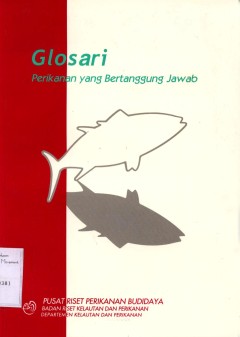
Glosari Perikanan yang Bertanggung Jawab
Glosari ini memuat semua definisi dari istilah kunci yang dikemukakan dalam seluruh FAO Technical Guildelines for Responsible Fisheries dan dokumen petunjuk/kode lainnya.
- Edisi
- -
- ISBN/ISSN
- 9798186850
- Deskripsi Fisik
- x, 152 hlm.; 18 x 25 cm.
- Judul Seri
- -
- No. Panggil
- 639 SOF g

Manajemen (Edisi 7 Jilid 1)
- Edisi
- Ed. 7
- ISBN/ISSN
- 9796833476
- Deskripsi Fisik
- xiv, 333hlm.; 21 x 27 cm.
- Judul Seri
- -
- No. Panggil
- 658 STE m
- Edisi
- Ed. 7
- ISBN/ISSN
- 9796833476
- Deskripsi Fisik
- xiv, 333hlm.; 21 x 27 cm.
- Judul Seri
- -
- No. Panggil
- 658 STE m
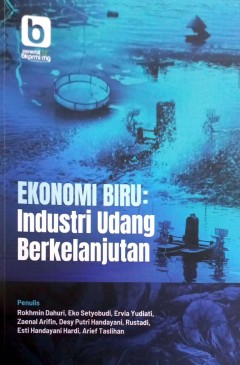
Ekonomi Biru : Industri Udang Berkelanjutan
Ekonomi biru merupakan konsep yang harus diimplementasikan dalam pembangunan di Indonesia karena indonesia memiliki sumberdaya alam dan sumberdaya manusia di bidang kelautan dan maritim yang sangat besar.
- Edisi
- -
- ISBN/ISSN
- 978-602-53426-5-3
- Deskripsi Fisik
- -
- Judul Seri
- -
- No. Panggil
- 639.543 ROK e

Arsipelago_ Kerja Arsip & Pengarsipan Seni Budaya di Indonesia
- Edisi
- edisi 1
- ISBN/ISSN
- 978-602-70013-3-6
- Deskripsi Fisik
- 228 Halaman
- Judul Seri
- -
- No. Panggil
- 651.5 FAR a
- Edisi
- edisi 1
- ISBN/ISSN
- 978-602-70013-3-6
- Deskripsi Fisik
- 228 Halaman
- Judul Seri
- -
- No. Panggil
- 651.5 FAR a

AKUNTANSI KEUANGAN SYARIAH, DASAR HUKUM, STANDAR AKUNTANSI DAN STUDY KASUS
- Edisi
- -
- ISBN/ISSN
- 978-623-362-545-6
- Deskripsi Fisik
- 409 halaman
- Judul Seri
- -
- No. Panggil
- 657.9 SAN s
- Edisi
- -
- ISBN/ISSN
- 978-623-362-545-6
- Deskripsi Fisik
- 409 halaman
- Judul Seri
- -
- No. Panggil
- 657.9 SAN s

Integrated management problem solving : panduan bagi praktis bisnis dan industri
- Edisi
- -
- ISBN/ISSN
- 978-602-99417-6-0
- Deskripsi Fisik
- -
- Judul Seri
- -
- No. Panggil
- 658 VIN i
- Edisi
- -
- ISBN/ISSN
- 978-602-99417-6-0
- Deskripsi Fisik
- -
- Judul Seri
- -
- No. Panggil
- 658 VIN i
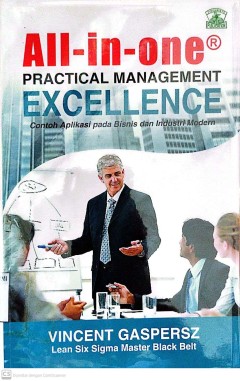
All in one practical management excellence : contoh aplikasi pada bisnis dan …
- Edisi
- -
- ISBN/ISSN
- 9786021957752
- Deskripsi Fisik
- -
- Judul Seri
- -
- No. Panggil
- 658 VIN a
- Edisi
- -
- ISBN/ISSN
- 9786021957752
- Deskripsi Fisik
- -
- Judul Seri
- -
- No. Panggil
- 658 VIN a

Manajemen Keuangan Multinasional
- Edisi
- Ed. 11, Jil. 1
- ISBN/ISSN
- 9789790753808
- Deskripsi Fisik
- xx, 468 hlm.; 30 cm.
- Judul Seri
- -
- No. Panggil
- 658.15 DAV m
- Edisi
- Ed. 11, Jil. 1
- ISBN/ISSN
- 9789790753808
- Deskripsi Fisik
- xx, 468 hlm.; 30 cm.
- Judul Seri
- -
- No. Panggil
- 658.15 DAV m
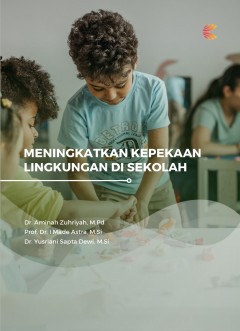
Meningkatkan kepekaan lingkungan di Sekolah
- Edisi
- Cet. 1
- ISBN/ISSN
- 9786231795663
- Deskripsi Fisik
- viii, 112 hlm.; 25 cm
- Judul Seri
- -
- No. Panggil
- 620.41 YUS m
- Edisi
- Cet. 1
- ISBN/ISSN
- 9786231795663
- Deskripsi Fisik
- viii, 112 hlm.; 25 cm
- Judul Seri
- -
- No. Panggil
- 620.41 YUS m

Management control of data processing : preventing management - by - crisis
- Edisi
- -
- ISBN/ISSN
- 0-13-548123-6
- Deskripsi Fisik
- -
- Judul Seri
- -
- No. Panggil
- 658.403 88 INM
- Edisi
- -
- ISBN/ISSN
- 0-13-548123-6
- Deskripsi Fisik
- -
- Judul Seri
- -
- No. Panggil
- 658.403 88 INM
 Karya Umum
Karya Umum  Filsafat
Filsafat  Agama
Agama  Ilmu-ilmu Sosial
Ilmu-ilmu Sosial  Bahasa
Bahasa  Ilmu-ilmu Murni
Ilmu-ilmu Murni  Ilmu-ilmu Terapan
Ilmu-ilmu Terapan  Kesenian, Hiburan, dan Olahraga
Kesenian, Hiburan, dan Olahraga  Kesusastraan
Kesusastraan  Geografi dan Sejarah
Geografi dan Sejarah